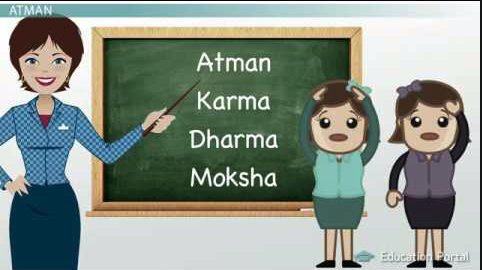This questions and answers document is prepared by a group of Hindu Speakers as a source of information for them or for any one seeking information on Hinduism. There are multiple ways of answering a single question and this group is not claiming to provide all potential answers here.

On Hinduism
The target audience is 9th grader Abrahamic students in American Schools but it will be useful to anyone interested in learning about Hinduism. All answers are designed to answer in about a 3 minute time frame. We have also provided links to other reading materials and video links relating to each question.
Considering Hindu speakers are invariably asked some sensitive geopolitical questions, we have included some potentially sensitive topics here to help speakers answer them from Hindu perspective. However we wish to clarify that this group is composed of Hindus but the group does not have any political affiliation.
Questions starting with “z” are being worked on now. We hope to list some 300 questions and answers below.
If you wish to review these questions and answers in the PDF format, here it is.
If you have any feedback on these QAs, please write to HinduSpeakers@gmail.com. Thank you.

20. Holidays
Diwali or Deepavali is one of the most popular festivals known as “Festival of lights”. It is celebrated by Hindus to mark the triumph of good over evil forces after Lord Ram (incarnation of Lord Vishnu) returns to his kingdom Ayodhya after killing the demon king Ravan (evil) to establish Drama (righteousness). Deepavali literally means the “row of lamps” used to decorate homes during the festival. There are other stories behind Diwali celebration in various parts of India with common themes.
Other reading material: What are the major Hindu holidays? Diwali Tool-kit (HAF), Diwali Tool-kit (CoHNA)
Relevant videos: Diwali Explored – The Festival of Lights (Pushpita Prasad), What is Diwali? (CoHNA), Why Sikhs celebrate Diwali? Utsav Deepavali,
Contributor: Nilesh Chaudhary
URL of this page: hinduspeakers.org/ufaqs/what-is-diwali/
Holi is a festival of colors, one of the popular and joyous festivals celebrated by Hindus. Holi is celebrated as a symbolic triumph of good over evil.
Holi derives its name from Holika. According to the popular Hindu text Bhagavatam, there was an evil powerful king who forced his citizens to worship him as God. But King’s son, Prahalad, became an ardent devotee of Lord Vishnu. The angry king after failing to punish Prahalad many times he plotted with his sister, Holika, to kill his son. Holika, who was immune to fire, tricked Prahalad to sit in a pyre with her. When the pyre was lit, the boy’s devotion to Lord Vishnu helped him walk away unscathed while Holika was burned to death. The immunity boon she had lost is due to its misuse.
Holi begins with lighting up a bonfire on Hole eve. People often throw wood, dried leaves and twigs into bonfires. Next day, people play Holi with colors, water balloons and water guns. Later, people enjoy delicious sweets. People also dance in the beats of Holi songs and popular folk music.
.
Other reading material: What are the major Hindu holidays? Holi Tool-kit,
Relevant videos: Short video on Holi by HAF,
Contributor: Geetha Ravula
The spiritual meaning of colors in Hinduism are listed as follows:
- Red – is auspicious and represents the spiritual power that overcomes evil. This color motivates us, increases our vitality, and makes us passionate. It also gives us power and courage that strengthens our faith, confidence, and strong will as well as reinforces loyalty.
- Orange or Saffron – represents fire that burns away impurities and signifies the quest for spiritual enlightenment. Swamis, Saints or holy devotees who choose a spiritual life commonly wear this color. This color increases our sensitivity, generosity, and compassion as it builds up our energy and enthusiasm for life.
- Yellow – represents the spiritual light that illuminates the truth. Yellow stimulates our mind and intellect so that we acquire wisdom and clarity, which increases our inner strength and self-esteem. Yellow also increases our creativity and curiosity.
- Blue – represents the imperishable nature of the soul and the infinite presence of the Supreme Creative Force. It symbolizes immeasurable and pervading reality – formless Brahman. Whatever is immeasurable can appear to the mortal eye only as blue. For example, the cloudless summer sky is blue to us because the endless distance of space is interpreted by the eyes as blue in color.
Other reading material: http://www.hinduism.about.com/b/a/2004_03_20.htm; http://www.janih.com/kitiana/hindu/index.html
Relevant videos: https://youtu.be/wIer9hmMh0A
Contributor: Monita Sharma
URL of this page: hinduspeakers.org/ufaqs/what-are-spiritual-meaning-of-colors-in-hinduism/
